Refer to the exhibits.
Exhibit A
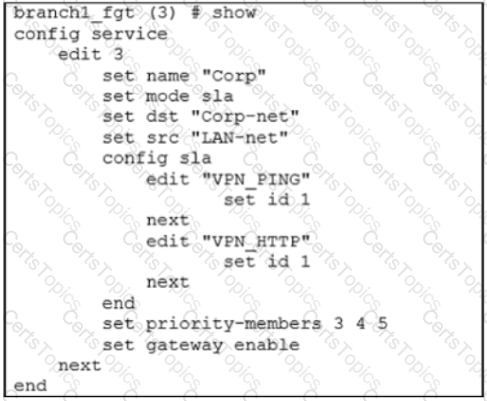
Exhibit B -
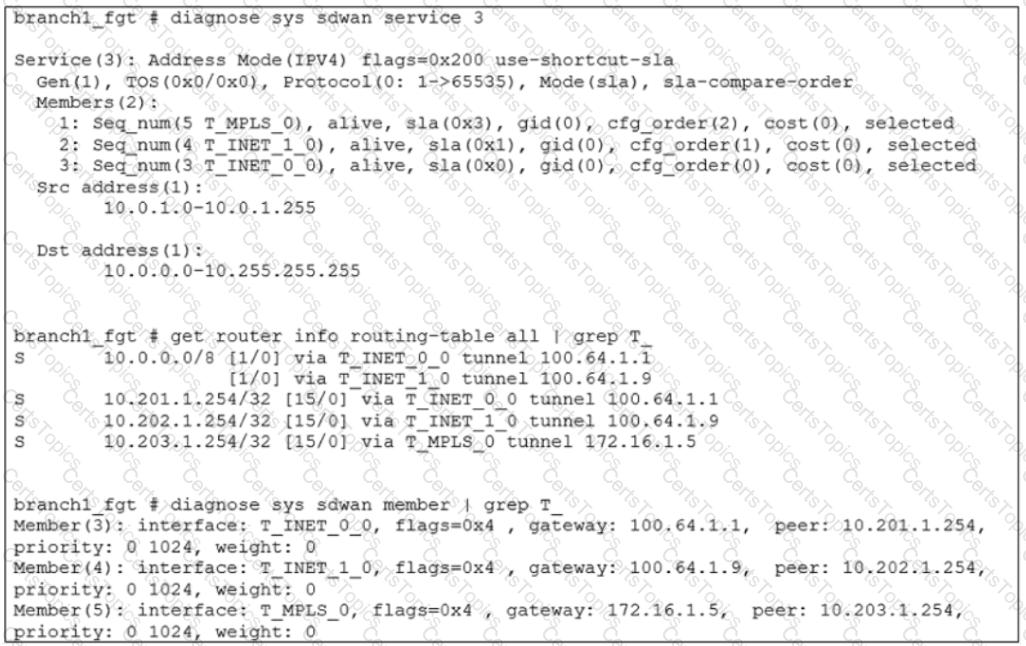
Exhibit A shows the configuration for an SD-WAN rule and exhibit B shows the respective rule status, the routing table, and the member status.
The administrator wants to understand the expected behavior for traffic matching the SD-WAN rule.
Based on the exhibits, what can the administrator expect for traffic matching the SD-WAN rule?
Which diagnostic command can you use to show the member utilization statistics measured by performance SLAs for the last 10 minutes?
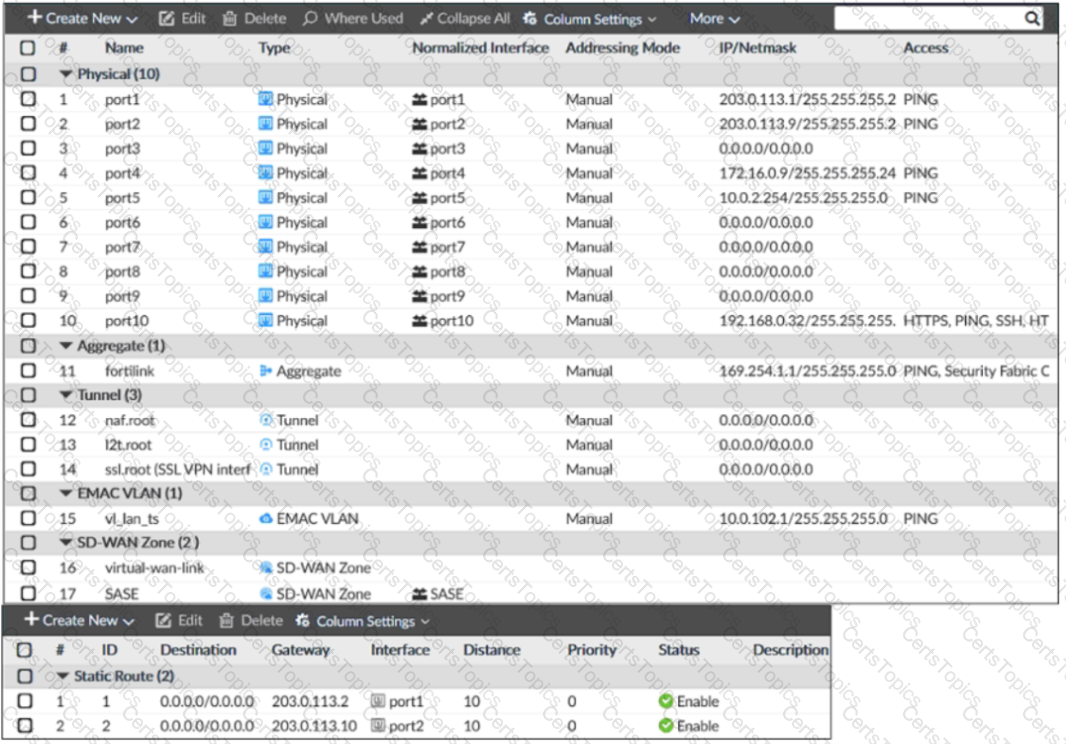
Exhibit B –

Exhibit A shows the system interface with the static routes and exhibit B shows the firewall policies on the managed FortiGate.
Based on the FortiGate configuration shown in the exhibits, what issue might you encounter when creating an SD-WAN zone for port1 and port2?
Refer to the exhibit.
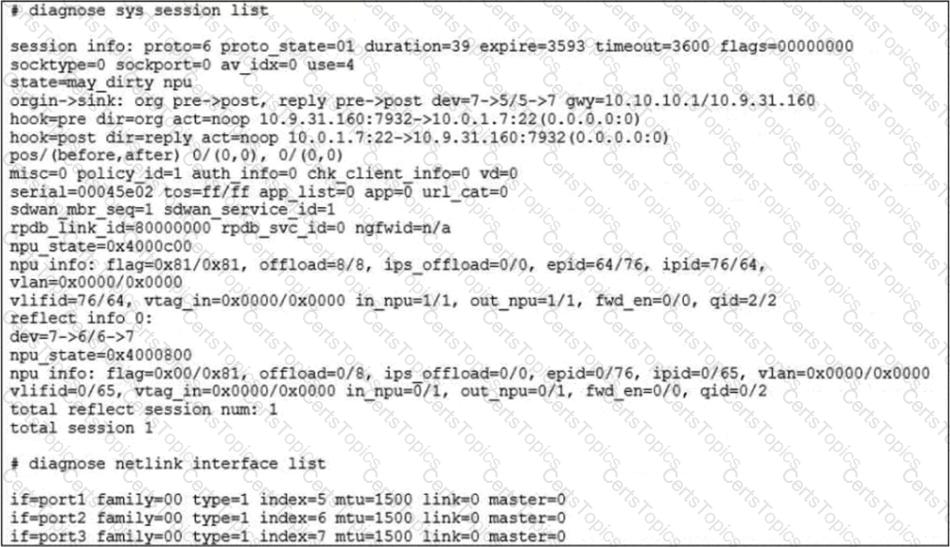
The exhibit shows the details of a session and the index numbers of some relevant interfaces on a FortiGate appliance that supports hardware offloading. Based on the information shown in the exhibits, which two statements about the session are true? (Choose two.)
Refer to the exhibit.

Which statement about the role of the ADVPN device in handling traffic is true?
Refer to the exhibit.
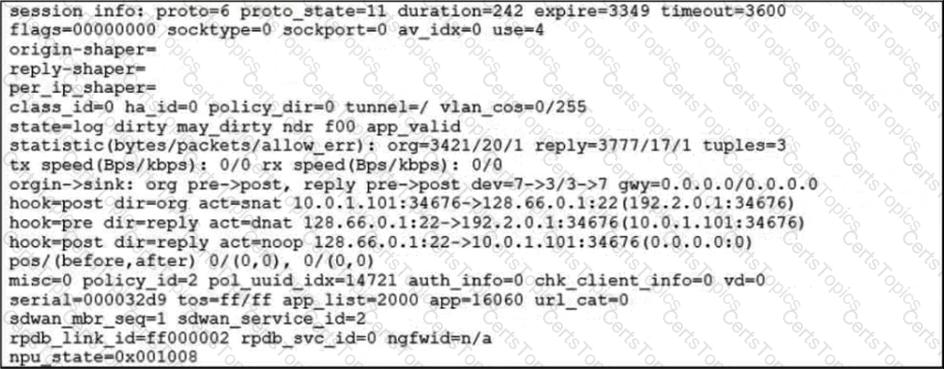
Which statement explains the output shown in the exhibit?
Refer to the exhibit.
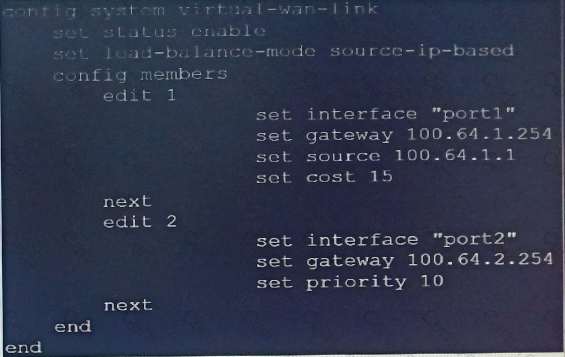
Based on the output shown in the exhibit, which two criteria on the SD-WAN member configuration can be used to select an outgoing interface in an SD-WAN rule? (Choose two.)
Refer to the exhibit.
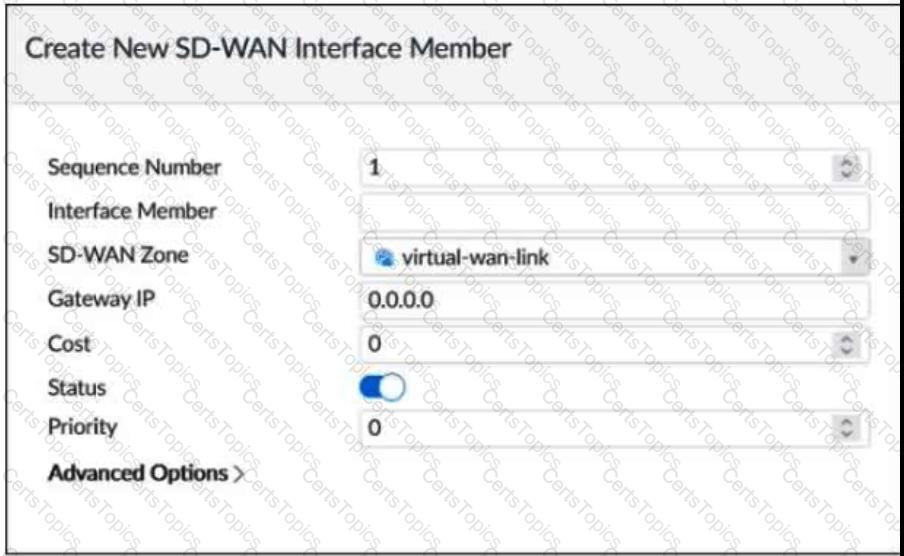
Which two SD-WAN template member settings support the use of FortiManager meta fields? (Choose two.)
Which CLI command do you use to perform real-time troubleshooting for ADVPN negotiation?

Which two conclusions for traffic that matches the traffic shaper are true? (Choose two.)
Which two statements about the SD-WAN zone configuration are true? (Choose two.)
Refer to the exhibit, which shows the IPsec phase 1 configuration of a spoke.
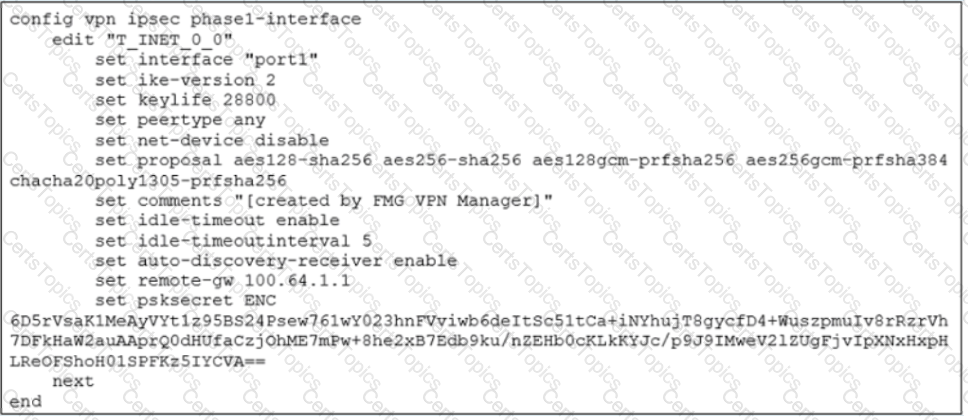
What must you configure on the IPsec phase 1 configuration for ADVPN to work with SD-WAN?
Which statement about using BGP for ADVPN is true?
Which are two benefits of using CLI templates in FortiManager? (Choose two.)
What are two benefits of using forward error correction (FEC) in IPsec VPNs? (Choose two.)
What are two reasons for using FortiManager to organize and manage the network for a group of FortiGate devices? (Choose two )
Refer to the exhibits.
Exhibit A -

Exhibit B -
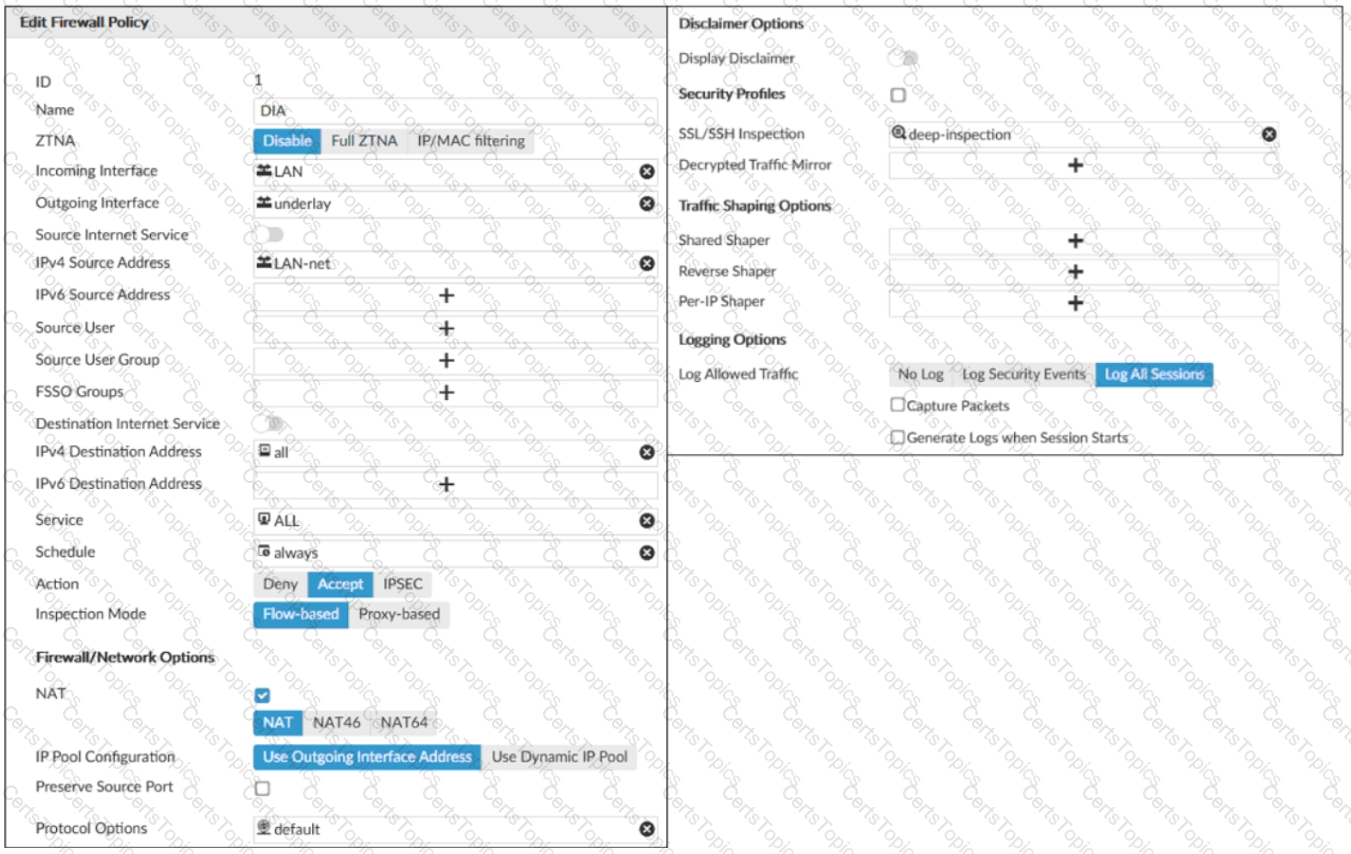
Exhibit A shows the traffic shaping policy and exhibit B shows the firewall policy.
The administrator wants FortiGate to limit the bandwidth used by YouTube. When testing, the administrator determines that FortiGate does not apply traffic shaping on YouTube traffic.
Based on the policies shown in the exhibits, what configuration change must be made so FortiGate performs traffic shaping on YouTube traffic?
Refer to the exhibit.

The exhibit shows the BGP configuration on the hub in a hub-and-spoke topology. The administrator wants BGP to advertise prefixes from spokes to other spokes over the IPsec overlays, including additional paths. However, when looking at the spoke routing table, the administrator does not see the prefixes from other spokes and the additional paths.
Based on the exhibit, which three settings must the administrator configure inside each BGP neighbor group so spokes can learn other spokes prefixes and their additional paths? (Choose three.)
Refer to the exhibit.
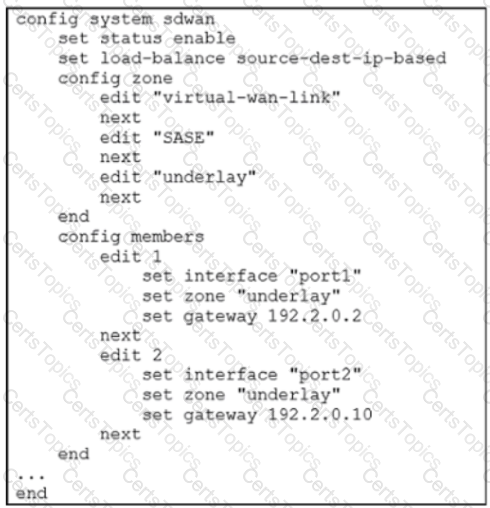
Which algorithm does SD-WAN use to distribute traffic that does not match any of the SD-WAN rules?
Which components make up the secure SD-WAN solution?
What are two reasons why FortiGate would be unable to complete the zero-touch provisioning process? (Choose two.)